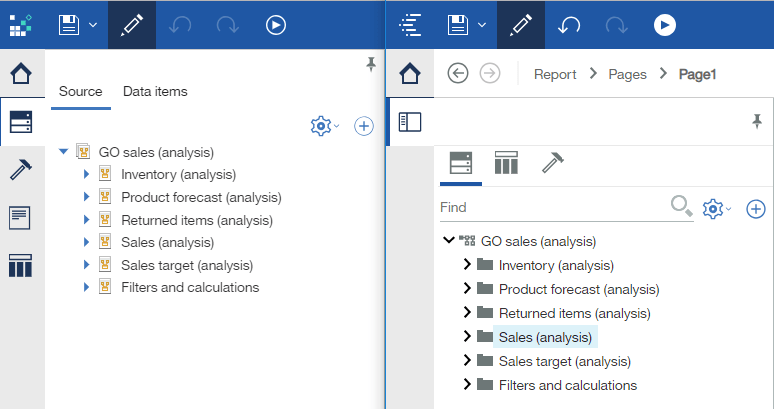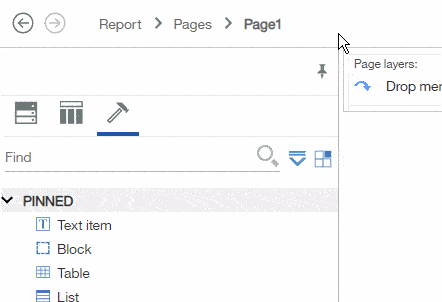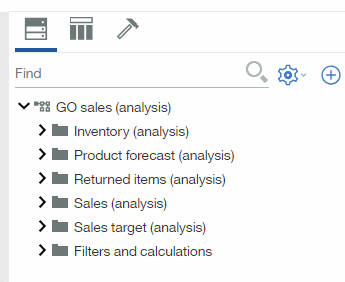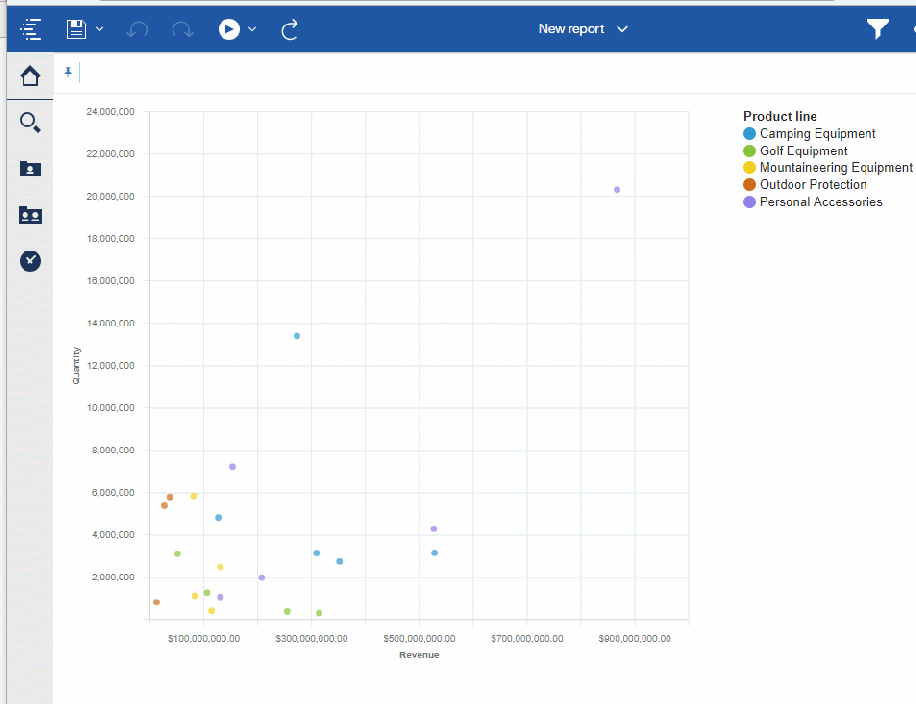Cognos 11.1 Reporting
Several changes have been made to the Reporting interface in Cognos 11.1. In this post, I take an in-depth look at these changes and I think you will agree that for the most part they are very positive. One quick note: if you are looking for a good overview of Cognos 11.1, I suggest reading our post Cognos 11.1 Overview which looks at each of the core enhancements to the new version. Now, without further ado, let’s dive into the deep end of Cognos 11.1 Reporting.
Let’s start with the navigation and insertable objects pane.
On the left we have 11.0, and on the right 11.1. The difference is palpable. The number of clicks to get from a report page to a query is the same, but it now flows much easier.
In previous versions certain items were not placed in the most logical positions. The condition explorer was found under the Queries tab, while Classes were under pages.
The new navigation menu simplifies the entire issue. With a single click we can go straight to which ever query or page we want. The classes and variables are right there. We also know exactly which page or query we’re looking at with a single glance.
Next we finally have a “Find” search field directly in the insertable objects pane. This is wonderful news for when we have huge models. It will return any item from the model that matches the string you’ve entered. It will not search through data though, so you can’t use it to find all members in a cube that match a certain string. This is something that I’ve heard requested many times, so it’s a relief that it’s finally in.
The right side of the page has been redesigned a little. The lock option is now part of the report. An interesting thing here is that the gear menu has the old menu bar from 11.0 if you knew the super-secret cheat code to open it. It turns out that this is because the super-secret 11.0 cheat code doesn’t work any more. The only thing the 3 dots (or ellipsis) menu has is “Clear all parameters”. Best of all, you don’t have to poke an eyeball to change from page design to structure.
One of the biggest complaints I had with 11.0 was the popover toolbar whenever you clicked on anything. There was an option to have it only appear on a right click, but it was still THERE. But now we can pin it to the top. It’s a million times better.
Another thing I’m very excited with is the new style editor. You can use it to apply styles in a very nice way. If you have a list selected it will let you edit almost every part of the list. It applies it as inline styles, not classes, so any changes or new items added would need the style reapplied.
The next item on the list is an interesting one. As users start dragging items into the report page, Cognos will create optional drop zones to make a guided layout. As the items are dragged into the report, you can manually place things above, below, or to either side of an object.
Now we move on to charts. Everyone loves charts, especially IBM. That’s why we have a new suite of them! While you may groan, “Why do we need another set of visualizations when we already have 4?!” these are actually a very nice step forward. These are browser rendered interactive charts. They can be resized on the fly, finally allowing for properly responsive report design.
See those extra data fields? As the graphs are browser rendered (via JavaScript) they can be filtered locally.
At the moment the JavaScript API does not have a way of talking to the graphs, but IBM has assured me it is on the horizon.
This now brings us to the one issue I have in this version. Cognos has a habit creating extended data items on OLAP sources. Extended data items cannot be edited directly. While they are ostensibly designed to ease the development of dimensional based reports, in practice I find they hinder more than they help. In 11.0 there was an easy way to disable them by default, unfortunately that option has been removed (intentionally or not) in 11.1.
Conclusion
On the whole, this version is several miles ahead of 11.0. Almost every aspect of the product has been substantially improved, and my only criticism has an easy work-around. Everyone should upgrade as soon as possible, it is simply that much better. I hope you found this article reviewing Cognos 11.1 Reporting helpful. You can get more analytics insights exploring our blog and e-newsletter. If you haven’t already, be sure to subscribe to the PMsquare Journal for more technical articles and updates delivered directly to your inbox.
Next Steps
If you have any questions or would like PMsquare to provide guidance and support for your analytics solution, contact us today.











